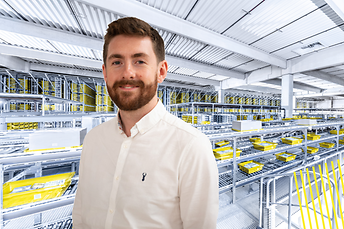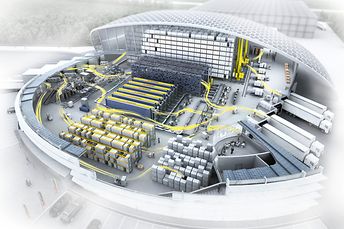Optimising Warehouse Productivity: Leveraging Diverse Technologies for Maximum Efficiency
In today’s global environment, customers expect vast product ranges and quick fulfilment times, putting pressure on logistics operations to be faster, more flexible, and more efficient. Whether it’s a retail distribution centre building mixed pallets or an e-commerce hub shipping a wide order profile of single items, the complexity is increasing across the board.

Understanding Your Business

The first step is to deeply understand the customer's business, including its history, network, offerings, and unique selling points. Key challenges within the business model are discovered and resolutions to these are included as requisite deliverables of the project. SSI SCHAEFER requests available data, typically sales data for the last months or years, including peak periods, and SKU master data. Our in-house data analysis team then use our custom-built tool, Logivision, to conduct a detailed breakdown that is used to illustrate patterns regarding peak days and hours, changes in SKU behaviours, throughput characteristics, volume movement, and much more. From this analysis, we create an ABC profile, categorising products as fast-moving (A-Movers) or slower-moving (B and C-Movers), which is crucial for determining handling methods. The data analysis outputs are agreed with the customer before diving into the development of the optimal solution.
Solution Development
Using the outcomes of the analysis, SKUs are tested against applicable automation systems within our portfolio for suitability. This means that the specific parameters of each system are compared against the individual physical and throughput characteristics of each SKU. This process will assign SKUs to SSI systems such that each SKU is handled in the most efficient manner within the overall solution .
Typically, we find that very fast-moving SKUs may actually be best handled through a manual method, as it can be much more efficient to pick directly from a pallet, than to decant items into a system for storage and then bring them back out again. There is no value in saving pickers through automation if I simply move them to a decant or a replenishment process.
The same can be true for products with a large geometric volume as well, which are small in quantity but do not fit into automation, thus handled as an exception. Similarly, there are often times where an automated replenishment of a manual pick face is much more efficient than using a Goods to Person (GTP) system that is fed by an Automated Storage and Retrieval System (ASRS). It isn’t always cost effective to use an ASRS to extract the same SKUs repeatedly for every picking task, when the SKU can instead have its own dedicated channel in a flow rack that can be replenished automatically when the SKU container is empty. There are a whole array of cases like those listed above which help determine the best strategy for each SKU, and our analysis and solution development will tease all of these out.

The process we follow means that many of SSI SCHAEFER’s systems are developed to include multiple technologies, each tailored to a portion of the customers business while being integrated with the others holistically. For example, we have systems that include an SSI Cuby Shuttle and an SSI Carrier Pouch Sorter System. We also have systems that include the SSI Carrier, deployed alongside an SSI Miniload System. A-Frames are often implemented with flow racks that are automatically replenished by an SSI Flexi Shuttle System, with Goods to Person picking being supplied by the same system in a separate area of the site . For small and medium sized companies, customers often find benefit in deploying an SSI LOGIMAT vertical lift module as a first step into warehouse automation, prior to integrating more complex systems later. This approach allows for scalability as the customer’s business grows, systems can be implemented now with the end goal of adding additional systems or sections of systems later. The possibilities really are endless, and our experienced and talented applications engineers always develop the best solutions for you, all from a single source.
If you are interested in exploring the world of intralogistics and don’t know where to start, please get in touch and we can work with you to find the best options for you and your business.
For more information - please Contact us today